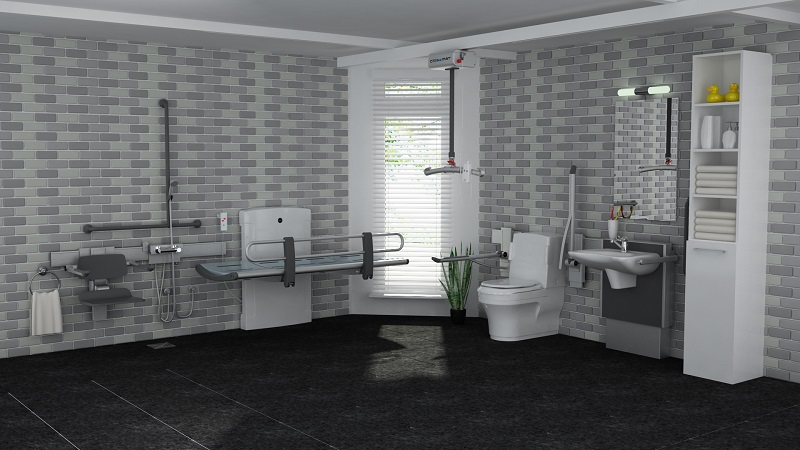New
‘best practice’ guidelines have been published addressing bedroom and bathroom
accessibility in multi-occupancy buildings- be it new build or refurbishment.
Simultaneously,
Britain’s leading provider of disabled toileting solutions, Closomat, is
announcing new developments that enable hotel, residential and care home
operators and communal/supported housing providers to comply, stylishly, with a
unique package from specification, through fitting to future service and
maintenance.
BS8300:2018
Design of an accessible and inclusive built environment extends the remit of
compliance covered under its predecessor BS8300:2009. The latest version is not
specific to new build projects, and applies to all building types that require
permanent sleeping accommodation for disabled people.
It
also picks up on the fact that some disabilities are not visible, but require
urgent access to sanitary facilities- such as the 6.5million people who have
bladder or bowel continence problems.

Under
the new guidelines, up to 5% of bedrooms should have a wheelchair accessible
en-suite shower room, if en-suite facilities are available elsewhere in the
building; a further 1% should have a fixed track hoist system, a further 5%
maximum should have an en-suite for ambulant disabled people, with an overall
total of 15% of bedrooms large enough to enable easy adaptation if required in
the future.
Closomat
offers a range of contemporary ceiling track hoist systems that can be tailored
to individual needs, enabling movement and transfer within a room, through to
an en-suite, or beyond.
In
the bathroom, it can provide a range of fixtures such as grab rails,
height-adjustable or fixed washbasins that integrate with a stylish wall track
system, enabling quick and easy adaptation to individual occupant needs.
Its
range of wash & dry toilets take accessibility into higher realms of
inclusion and intimate hygiene, with contemporary styled floor- standing,
wall-mounted and height adjustable variants.
“Accessibility
is a growing consideration in building design,” explains Robin Tuffley,
Closomat marketing manager.
“Whether
designing a new build or refurbishing, it makes sense to future-proof it to
accommodate the growing numbers of people with impairments who need help who
will stay somewhere, whether short, medium or long term. Just in the hotel
industry, parties which include a disabled person spend £14billion a year on
tourism and travel: can you afford to ignore that?
“The
Standard applies also to residential and care homes for example: we all know
how that market is set to increase, and that inevitably the older generation
have more issues with mobility.”




















